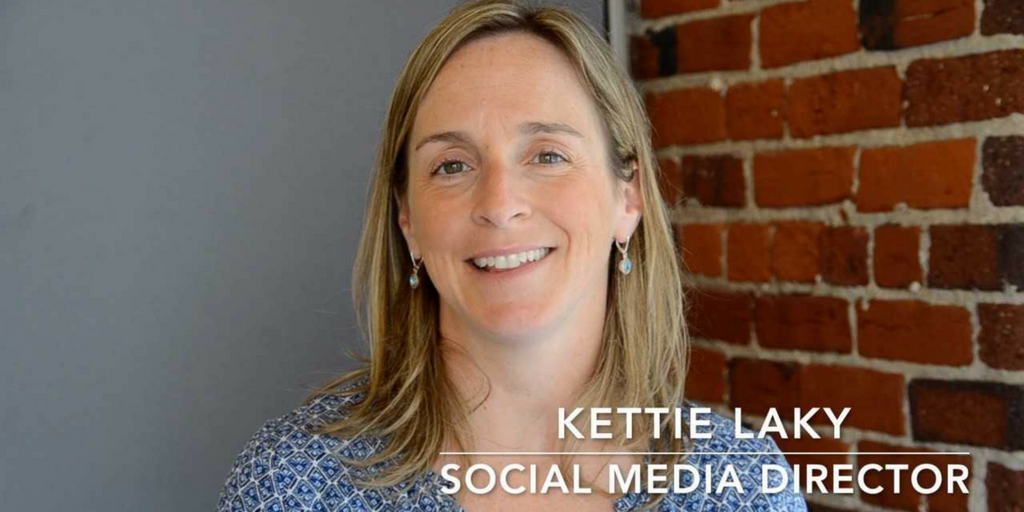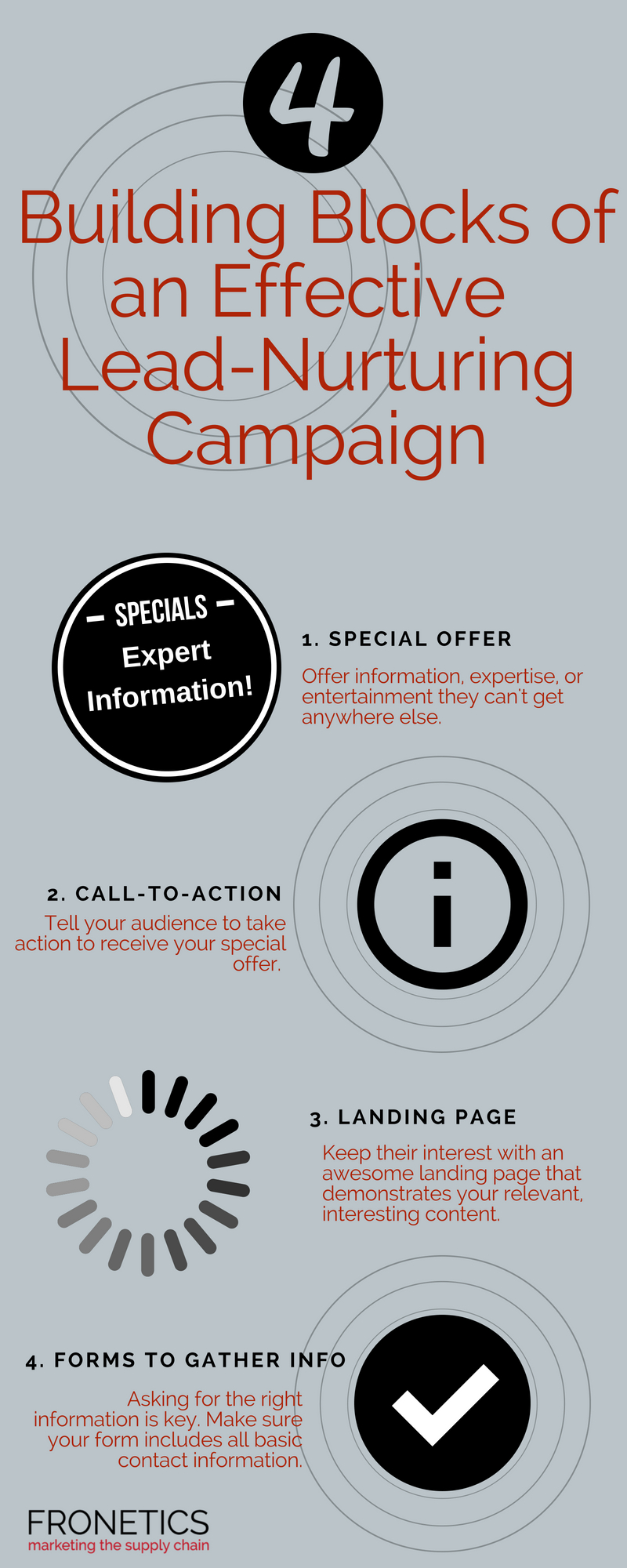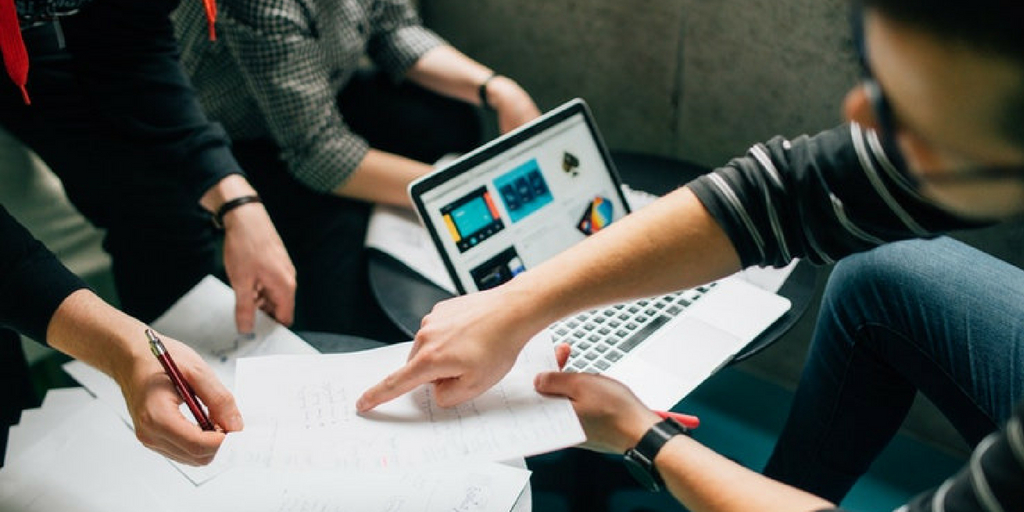
by Jennifer Hart Yim | Jul 30, 2018 | Blog, Content Marketing, Logistics, Marketing, Supply Chain, Talent
A new article discusses the way that automation, AI and big data are transforming the industry. It raises the alarm that supply chain management will soon cease to exist, only to assert that it will still exist, just in a very different form.
This guest post comes to us from Argentus Supply Chain Recruiting, a boutique recruitment firm specializing in Supply Chain Management and Procurement.
A new article in Harvard Business Review has been generating some automation-related controversy in the Supply Chain Community, as well as lots of buzz and interesting conversation. Naturally, we at Argentus want to weigh in. Titled, “The Death of Supply Chain Management,” the article discusses the way that automation, AI and big data are transforming the industry. It raises the alarm that the function will soon cease to exist, only to – as these “X is dead“ articles often end up doing – assert that it will still exist, just in a very different form.
Beyond the obviously clickbait headline – which we couldn’t help but indulge in ourselves – the article makes some fascinating predictions about the future of supply chains. But even more relevant to us at Argentus, it has some interesting forecasts about the future of supply chain talent in particular, in the coming world where automation is king.
Automation is one of the hotter topics in the supply chain community – as it is across the entire economy. As a major feature in McKinsey discusses, automation has already made a number of jobs in the field way less relevant, threatening to eliminate those jobs entirely. Many companies have already automated their front-line transactional purchasing activities. Automation has eliminated a number of blue-collar supply chain jobs in warehouses and distribution centres, and driverless trucks stand to transform the logistics field, eliminating the need for millions of truck drivers.
But many are alarmed that automation will replace white-collar workers as well. The HBR article talks about how more companies are automating functions like demand forecasting, which has long been seen as more of an “art” than an exact science. No longer.
In the authors’ words, “within 5-10 years, the supply chain function may be obsolete, replaced by a smoothly running, self-regulating utility that optimally manages end-to-end workflows and requires very little human intervention.”
[bctt tweet=”Automation through digital technology isn’t really just about lowering labour costs, it’s about creating huge opportunities for companies to dive deep into data and create end-to-end visibility into their own supply chains.” username=”Fronetics”]
Automation through digital technology isn’t really just about lowering labour costs, it’s about creating huge opportunities for companies to dive deep into data and create end-to-end visibility into their own supply chains. This kind of visibility opens up huge opportunities, not only by lowering risk but also by letting companies become more strategic.
The HBR article outlines an interesting development: more retail and manufacturing companies are adopting “digital control towers” for their supply chains. These companies have physical rooms staffed with dozens of data analysts working in real-time to identify and squash challenges.
Picture an airport control tower, but for supply chain management: staffed 24/7, full of large screens full of 3d graphical representations of potential bottlenecks and inventory shortfalls all the way from order to delivery. These control towers are full of systems that can automatically correct for various issues, and they’re increasingly considered to be core aspects of company operations.
The authors outline how mining company Rio Tinto is using robotic train operators, cameras, lasers, and tracking sensors to monitor and fully automate its supply chain from train to port.
But do these developments hearld the end of the need for skilled Supply Chain professionals? Of course not.
A highly-automated “digital control tower” needs responsive individuals with deep understanding of how to solve Supply Chain challenges. An automated mining supply chain deep in the jungle, monitored in another country still needs people to monitor it and respond to issues.
Maybe unsurprisingly, the HBR article ends up saying that Supply Chain people will always be in demand, but that skill needs are changing, and we agree. People need to re-skill, up-skill, and educational institutions need to make sure that they’re training people with skills for the future and not the past. In the short term, executives who can manage people doing repetitive tasks (like transactional purchasing) need to learn how to manage information flows for more highly-specialized workers. Further down the ladder, the highest-demand analysts will be those who can draw insights from an ever-expanding pool of data and communicate them to senior leadership. Companies will need specialists with deep understanding of both technology and operations to design and implement automated supply chains – even more than they already do.
But beyond the trends that the HBR article outlines, we think they’re missing a key element: even if automation progresses to affect white-collar workers, even if data automates functions like supply planning, logistics, and sourcing, the human element will always matter. Companies will always need people who can build relationships with vendors when conducting large-scale Procurement. They’ll always need people who can negotiate contracts and rates, people who have the emotional intelligence to understand the psychology of the person sitting on the other end of the table, and arrive at a deal that drives value.
Machines will get better at the tactics, but the strategy will always be human, at least until the robots take over the world completely. (Which we don’t think will happen, by the way).
In the 19th century, luddites protested the adoption of machines in the British textile industry, fearing that they’d be out of a job. And they were. But while opportunities for weaving by hand disappeared, employment didn’t: the industrial revolution pushed new skillsets to the fore, creating a demand for people to manage production – leading to today’s supply chain function, by the way – while raising overall wealth and standard of living in the process.
While the rise of AI, big data and workplace automation has some important differences, we think it’s a worthwhile analogy: as with then, these new technologies will shift the employment landscape and put the squeeze on individuals with transactional or blue-collar skillsets. But supply chain professionals who can up-skill themselves, and become masters of the interpersonal skills that will never go away, will have more opportunities than ever before.
Take it from a company that’s on the front-lines of hiring in Supply Chain: while automation eliminates jobs at the lower-skilled end of the spectrum, demand for high-skilled candidates is higher than ever before, and only rising. So is Supply Chain Management on death’s door?
Not so fast.
Related posts:


by Fronetics | Jul 26, 2018 | Blog, Content Marketing, Logistics, Marketing, Social Media, Supply Chain
Social messaging apps have taken over the way consumers are interacting with brands. Their increasing popularity means your business needs to embrace this new trend.
No one can deny the reach of social networks. After all, Facebook has over 2 billion active users. But as marketers, we’re noticing that consumers are moving away from social networks and welcoming the popularity of messaging apps with open arms.
Social media is constantly changing, and every new app gives users a new way to engage with family, friends, and brands. With the shift toward messaging apps, your target audience is making the leap, so your business needs to as well.
Messaging apps have a strong appeal: personalized engagement. Brands are able to make a one-on-one connection with every potential customer that comes in contact with their app pages. This is an opportunity you cannot miss!
Companies reaping the messaging app benefits
Yoox Net-a-Porter, a UK-based ecommerce firm with U.S. operations, made the switch to messaging apps after the brand discovered that many of its customers preferred WhatsApp for product details and suggestions and purchases. WhatsApp easily integrated with its order management system and is currently being tested as the company’s shipping notification system.
“Realizing that consumers increasingly prefer to receive information via personal messaging services rather than email, we have been working with WhatsApp to improve the way we use the WhatsApp service with great results so far,” writes Yoox Net-a-Porter on its blog.
And Yoox Net-a-Porter isn’t the only brand making the switch. WhatsApp, a social messaging platform owned by Facebook, reported 1.5 billion active users and over 60 billion messages sent per day at the end of 2017. These numbers, continuing to grow at a staggering rate, make it hard to ignore that brands need to be investing their marketing time and dollars in messaging apps.
[bctt tweet=”WhatsApp, a social messaging platform owned by Facebook, reported 1.5 billion active users and over 60 billion messages sent per day at the end of 2017. ” username=”Fronetics”]
In our latest video, Kettie Laky, our social media director, discusses why social messaging apps are becoming so popular and the top four apps your brand should become familiar with.
Video: Top 4 social messaging apps your brand needs to be using
Takeaway
As with any new marketing effort, trial and error are a big part of the equation. In order to get the most from your time (and budget!), make sure you’re utilizing the best messaging app for your brand. Before committing to an app, ask these important questions:
- Who is my target audience?
- How will the app add value to my target audiences?
- How do I want to deliver my content?
- Do I want to use more than one app?
- How frequently will I be marketing on the app?
These questions can help you find the social messaging apps that will work best for your marketing campaign and start connecting with customers in a more personalized way. These apps making sharing valuable content easier than ever.
What social messaging apps has your business tried?
Related posts:


by Fronetics | Jul 25, 2018 | Blog, Content Marketing, Logistics, Marketing, Social Media, Strategy, Supply Chain
Here are 4 components of an effective lead-nurturing campaign that will entice your potential customers and have them moving down the sales funnel.
Your content marketing objectives really come down to one basic goal: to generate a high number of quality leads. These leads will help drive tomorrow’s revenue and increase sales. In fact, 85% of B2B marketers say lead generation is their most important content marketing goal.
[bctt tweet=” 85% of B2B marketers say lead generation is their most important content marketing goal.” username=”Fronetics”]
As more and more buyers discover brands before they are ready to purchase, an essential function of any marketing department is lead nurturing. That is, moving leads through the sales funnel by leveraging what’s known about their needs and online behavior.
Marketo, a marketing software company, describes lead nurturing as being “personalized, adaptive, and able to listen and react to buyer behavior in real time.”
We know that marketers need to focus their lead nurturing strategy on multi-channel engagement. This includes utilizing email, social media, blogs, and video to interact with potential customers. A multi-channel lead nurturing strategy is essential for companies looking to optimize their user experience and bring in high-quality leads.
With so many variables contributing to a productive lead-generation campaign, it can be challenging to pinpoint what differentiates a successful campaign from a mediocre one. Here are four tools that will help you deliver a series of targeted messages across multiple touch points and platforms to help solidify your lead-nurturing strategy and increase your quality leads.
4 building blocks of an effective lead-nurturing campaign

(Made with Canva)
Takeaway
Successful lead nurturing is really about utilizing all the tools at your disposal to meaningfully connect with your leads in order to build trust and establish credibility. Using these four key points, marketers can start building on their lead-generation efforts as they guide potential customers on their journey to becoming a client.
And don’t forget: Asking for the right information is key! If you want to nurture high-quality leads, you need to make sure you’re capturing relevant, helpful information along the sales journey.
Related posts:


by Fronetics | Jul 23, 2018 | Blog, Content Marketing, Logistics, Marketing, Social Media, Strategy, Supply Chain
Part four in our series on effective lead generation walks you through how to create a form that converts leads, getting you the information you need without driving prospects away.
Welcome to the last installment of our series on effective lead generation and nurturing. Now that you know how to:
- Create and package a valuable offer
- Add calls-to-action that work
- Design a landing page that converts
So, what’s next? The final step in the lead generation process, and one that’s too often overlooked and undervalued, is designing a form that gets you the information you need.
It’s all in your form
When prospects get to your landing page, they’ve indicated that they’re interested in your offer. Ideally, what they find on your landing page has reaffirmed their interest. Now it’s time for them to provide you with what you’re looking for in return for the value you’re offering them: their contact information.
The information you glean from your prospects will feed into your Customer Relationship Management (CRM) or other lead management database. This means that you should essentially be retrofitting your form based on your email segmentation criteria. In other words, you want to get just the right information from your prospects that will allow you to tailor your lead nurturing to best suit their needs and interests.
[bctt tweet=”An effective form strikes the delicate balance between acquiring all the necessary information and keeping the willingness and attention of your visitors.” username=”Fronetics”]
Your head might be filling with visions of long and comprehensive questionnaires — not so fast. If you make your form too long or involved, prospects will abandon it out of impatience and frustration, or feel that you are exploiting them for more time or information than they’re willing to provide. An effective form strikes the delicate balance between acquiring all the necessary information and keeping the willingness and attention of your visitors.
3 characteristics of forms that convert leads
For this last and crucial step in your lead generation strategy, it’s all about capturing leads. So, what makes for an effective form?
1. Find the length that works for you.
Conventional wisdom would have you believe that the shorter your form the more leads you’ll get, whereas the longer the form, the better quality (though fewer) leads you’ll get. But that’s a bit of a simplistic and defeatist way of looking at it.
We think you can have your cake and eat it, too. The key is to design your form with your email segmentation criteria in mind.
Ask as few questions beyond the basics as possible to get you precisely the information you need. Your goal is richness of information, as opposed to lengthy, detailed questions. For more, check out HubSpot’s guide to creating a form.
2. Don’t frighten them away.
It may seem counterintuitive, but you should avoid using the word “submit” on your form. Nobody likes the idea of “submitting” their information.
Instead, use a phrase that demonstrates that your prospect is about to get something that they want by supplying their information. For example, “Get it free,” or, “Download now,” emphasizes what the prospect will receive, rather than what they will be giving.
3. Protect their privacy.
In the current climate, we’re all thinking more and more about how our data gets collected and shared. Make sure your prospects know that you’ll be a good steward of the information they provide you.
Add a privacy message or link to your privacy policy, indicating that their email or contact information won’t be shared or sold.
Creating forms that convert leads is the final step — though one of the most crucial — in effectively turning website visitors into prospects. If you can manage to create a valuable offer, entice visitors with a call-to-action, convince them to convert on a landing page, then present a form that encourages them to complete it (rather than drives them away), then you’ve done your job as a marketer.
Related posts:


by Fronetics | Jul 19, 2018 | Blog, Content Marketing, Logistics, Marketing, Social Media, Strategy, Supply Chain
In part three of our series on effective lead generation and nurturing, we walk you through the components of effective landing pages that convert visitors to leads.
If you’ve been keeping up with our four-part series on effective lead generation, you should be up to speed on creating a valuable offer and a call-to-action that works. The next step in a finely tuned lead generation process is a landing page that converts.
Why does my offer need a landing page?
[bctt tweet=”Landing pages are crucial, and brands miss out on opportunities when they fail to optimize them. According to HubSpot, marketers see an average 10% conversion rate on landing pages — that represents a huge amount of missed opportunities.” username=”Fronetics”]
Landing pages are crucial, and brands miss out on big opportunities when they fail to optimize them. In fact, according to HubSpot, marketers have seen an average 10% conversion rate on landing pages — that represents a huge amount of missed opportunities. Brands that have it right, those that focus on designing for conversions, reap the benefits in big ways.
Your primary objective for a landing page is to get visitors to submit their contact information in exchange for the offer. At this point in the process, your potential customer has already engaged with your call-to-action, meaning he or she is interested in your offer. When they get to your landing page, everything they find there should affirm their choice to and assure them that the content they are about to download is going to be relevant, interesting, and valuable.
Designing landing pages that convert
So what are the hallmarks of a great landing page? Starting with the basics, your landing page should briefly, simply, and clearly describe the benefits of your offer. It’s important that there be as few distractions as possible. For example, make sure the page doesn’t have a top navigation menu. Bonus points for including ways to share your offer on social media.
Additionally, you should make sure that your landing page doesn’t include links to other things on your website, as they can distract the lead and perhaps send them somewhere else on your website where they can find the information you’re presenting in your offer.
As you design your landing page, keep this checklist in mind:
- Is it clean, organized, and clearly presented?
- Is there any ambiguity about where or how leads should enter their information?
- Does it describe the benefits of my offer?
- Is it free of extraneous or distracting content or links?
- Is it mobile-friendly?
- Does it contain easy ways to share on social media?
If you follow these tips for landing pages that convert visitors to leads, we’re confident you’ll start to see an uptick in your website conversion rate almost immediately.
Related posts:


by Fronetics | Jul 18, 2018 | Blog, Content Marketing, Logistics, Marketing, Supply Chain
Once you’ve decided how to create and package a valuable offer, the next step in an effective lead generation is creating calls-to-action that convert leads.
If you read part one of our four-part series on effective lead generation, you’re familiar with the first step in creating a campaign that will generate a high volume of quality leads: creating a valuable offer. So what’s next?
In part two of this series, we’re exploring how to draw visitors from reading content on your website to taking a desired action.
When we talk about this second step, we use the term “call-to-action” (CTA). It refers to the tool that asks the reader of your content to take the next step — rather than just assuming they will do it. A call-to-action can be in-line text with a hyperlink, a button, or an image-based web-banner.
Why do you need a CTA?
CTAs are the vital step where you ask your potential client or buyer to take an action that moves them one stop closer to your objective of connecting them with your company. But plenty of marketers forget this crucial element of an effective campaign.
If you’re offering high-value content (like an ebook, webinar, infographic, or product demonstration), but you aren’t including a specific CTA, you’re not giving your audience direction for obtaining the offer — and you’re probably missing out on plenty of qualified leads.
[bctt tweet=”If your CTAs aren’t effective at capturing the attention of your prospective leads and persuading them to click, then no matter how impressive your offer or how well-written your content, it’s pretty much useless.” username=”Fronetics”]
A CTA is yet another opportunity to optimize your campaign. Remember that you’re competing with every other brand in a fight for the attention of your audience, and you need to make the most of every opportunity to draw them toward your business.
Keep in mind that if your CTAs aren’t effective at capturing the attention of your prospective leads and persuading them to click, then no matter how impressive your offer or how well-written your content, it’s pretty much useless. Your CTA can be used on product pages, in display ads, email, social media, direct mail, or pretty much anywhere you’re marketing your offer.
Elements of calls-to-action that convert leads
Not all CTAs are created equal. As you think about incorporating a call-to-action into your offer, keep in mind these 4 tips for maximizing its productivity:
1. Choose your location wisely.
Back when people read newspapers, editors would place important news “above the fold:” high enough on the page so the reader wouldn’t have to unfold the paper to see it.
A well-placed call-to-action follows the same principle, and should be high enough on the page so your target lead won’t have to scroll down to see it. You should also place a second CTA further down within the offer.
2. Be clear.
You don’t want to leave your reader puzzling about what will happen when he or she follows your CTA. State the offer clearly, and be specific. For instance, rather than “download now,” say “download your free ebook.”
3. Don’t hide your light.
Your call-to-action should stand out on the page. Choose contrasting colors for your CTA, so it draws the eye and doesn’t blend into the rest of your text.
We’ve found, in many cases, our clients have the most success with calls-to-action that are image-based (particularly in emails). A really well-designed, attractive, image-based CTA can effectively draw click-throughs in a way other kinds of calls-to-action can’t. Give it a try!
4. Link to a landing page.
Send potential leads to a targeted landing page that is relevant to what they are looking for. Your CTA should send them to a page that will convert them into a lead.
For more information, check back in with our next post, when we explore how to create a landing page that converts leads.
How do you design calls-to-action that convert leads?
Related posts:











